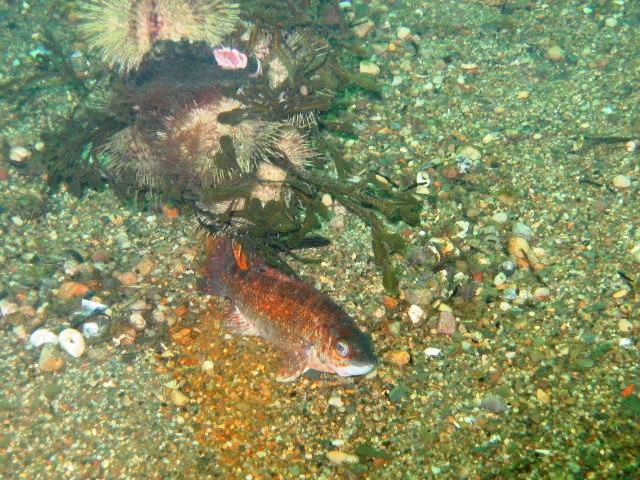Cunner

Family: Labridae
Scientific name: Tautogolabrus adspersus
Description: The cunner is a wrasse with an oblong body with a pointed head. It has a small terminal mouth with thick lips and several series of teeth. Body colour is variable, ranging from mottled with brown, reddish, to blue, dull olive green and a bluish or whitish belly.
Habitat and distribution: These fish inhabit shallow inshore waters, usually living on or near the bottom. They generally congregate around wharves, wrecks and seaweed. Distributed throughout Atlantic Canada to the Gulf of St. Lawrence.
Diet: Omnivorous feeders which consume a wide variety of molluscs, crustaceans and other bottom dwelling invertebrates.
Growth: Cunners become mature when they reach around 8-11cm in length. At four years old, cunners reach 16.5cm in length. These fish can grow up to 43cm long and weigh up to 1.4kg.
Reproduction: Spawning occurs between June and August. The male and female pair release sperm and eggs into the water column. The buoyant eggs hatch about 40 hours after fertilization.
Predation: Preyed upon by shore fishes (sculpin) and shore birds.
Relation to man: Little commercial value, but considered a good game fish.
Interesting facts: The cunner becomes torpid (hibernates) during the winter under rocks. These fish generally occupy home ranges and will return to these ranges when displaced.
Images
 |
 |
 |
 |